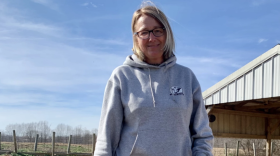Kentucky farmers growing fresh produce will have up to two years to meet new compliance regulations set by the U.S. Food and Drug Administration. The FDA announced the final Produce Safety Rule Friday, a proposal they have been revising since 2013.
The Food Safety Modernization Act (FSMA) is a produce safety rule set by the FDA that, for the first time, has established science-based minimum standards for the safe growing, harvesting, packing, and holding of fruits and vegetables grown for human consumption. The new standards are aimed at minimizing foodborne illness. Kentucky Department of Agriculture spokesman Josh Lindausays the standards will affect mostly large scale farms and that the department along with the University of Kentucky Cooperative Extension is working on programs to educate growers.
“Basically the whole idea behind this is that water will have to be tested and that you are basically minimizing risk, with any uncooked product there is always going to be a certain amount of risk associate with that.” Lindau said.
Farms that sell less than $500 thousand-dollars a year in produce will not be affected.
The U.S. Department of Health and Human Services website lists the following rules to be implemented:
1. Agricultural Water
- Water quality: The final rule adopts the general approach to water quality proposed in the supplemental rule, with some changes. The final rule establishes two sets of criteria for microbial water quality, both of which are based on the presence of generic E. coli, which can indicate the presence of fecal contamination.
2. Biological Soil Amendments
- Raw Manure: The FDA is conducting a risk assessment and extensive research on the number of days needed between the applications of raw manure as a soil amendment and harvesting to minimize the risk of contamination. (A soil amendment is a material, including manure, that is intentionally added to the soil to improve its chemical or physical condition for growing plants or to improve its capacity to hold water.)
3. Sprouts
- The final rule includes new requirements to help prevent the contamination of sprouts, which have been frequently associated with foodborne illness outbreaks. Sprouts are especially vulnerable to dangerous microbes because of the warm, moist and nutrient-rich conditions needed to grow them.
4. Domesticated and Wild Animals
- The rule addresses concerns about the feasibility of compliance for farms that rely on grazing animals (such as livestock) or working animals for various purposes. It establishes the same standards for these animals as it does for intrusion by wild animals (such as deer or feral swine). Farmers are required to take all measures reasonably necessary to identify and not harvest produce that is likely to be contaminated.
5. Worker Training and Health and Hygiene
6. Equipment, Tools and Buildings
- The rule establishes standards related to equipment, tools and buildings to prevent these sources, and inadequate sanitation, from contaminating produce. This section of the rule covers, for example, greenhouses, germination chambers, and other such structures, as well as toilet and hand-washing facilities.
Exemptions and compliance depend on the size of the produce operation. A full description of the new rules can be found on the FDA site.
The Centers for Disease Control and Prevention estimate that 48 million people get sick annually from foodborne illness, with an estimated 300,000 related deaths.





